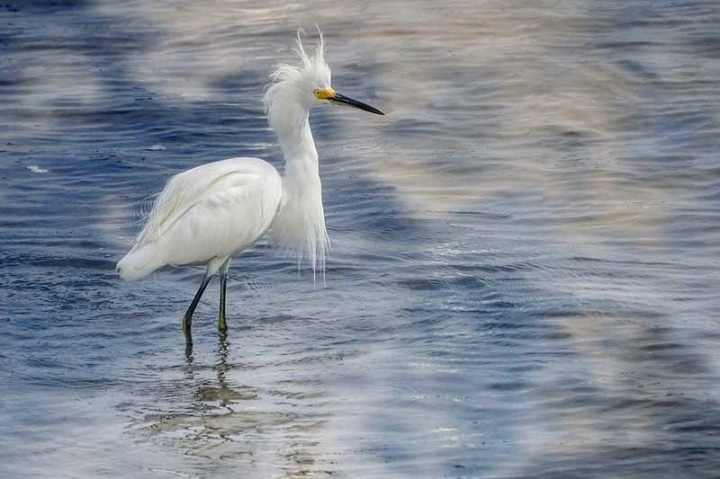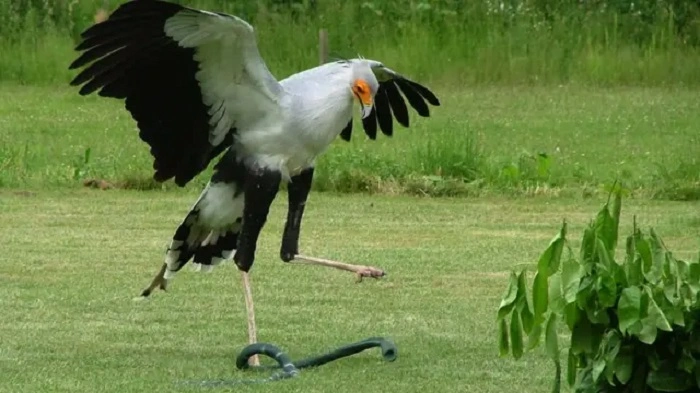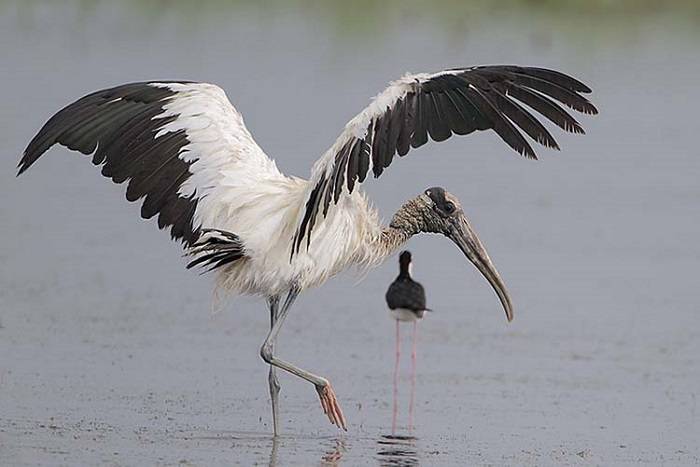4Some birds soar aloft on broad wings. Others shine on beauty. But a special tribe commands attention without flight or plumage—tall. They are the long-legged birds. From flamingos to cranes, from herons to stilts, they stride through marshes, stick their bills into shallow water, and exhibit elegance almost on the verge of royalty. Long legs are not for show. They are survival means, sharpened by centuries of evolution. Let us enter their world.
Why Ought Birds to Have Long Legs?
Long legs are not merely coincidental in appearance. They are sturdy, purposeful, and well suited to life.
- Wading ability: Birds are able to wade shallow water without having water ruin their feathers due to their long legs.
- Hunting benefit: As they are far above the ground, they have the ability to spot fish, insects, and crustaceans.
- Stepping and balance: They are able to stroll beautifully around marshes due to long strides.
- Courtship: Long legs make visual display in mating courtship in certain species.
We see as grace what actually functions beneath the surface of beauty.
The Flamingo: Nature’s Pink Dancer
No more classic long-legged bird exists than the flamingo. Stilts long and thin, they stride into salty lagoons and filter-feed on bills with a downward hook. They are pink as a result of carotenoids in shrimp and algae.
Their long legs allow them to kick up dirt to get food within reach. Their standing-on-one-leg resting position serves to make them mysterious. It is as if observing ballet—slow, synchronized, compelling when a herd moves.
Flamingos are showing us that form and function tend to go hand in hand.
The Crane: Symbol of Longevity
The cranes are some of the tallest birds to fly, and there are species that are over five feet tall. They have thin, powerful, and long legs. The cranes in Asia represent immortality and tranquility of mind. Their dance, which is created through bowing and jumping, is one of the most beautiful rituals in birds.
Heron legs are not just for appearances—helping them traverse the wetlands and grasslands while they search for insects, grain, and small rodents. Beauty turned into survival in their walk.
The Heron: Patient Hunter
Heron’s long neck and legs describe how patient they are. They wade quietly in the water, waiting. And then with lightning speed, strike. Their long legs allow them to wade deeper than any other competitor, so their food is very much within their reach that other competitors don’t.
Great blue herons, seen throughout North America, stretch well over four feet high. They stroll with a slow deliberateness that causes them to seem almost meditative. Watching a heron is watching for stillness translated into moments of energy.
The Stork: Messenger of Myths
Storks carry stories, and long legs as well. Storks in the mythology of Europe would deliver babies, a symbol of rebirth. In fact, long legs help them travel long distances across marshes, rivers, and even deserts.
African marabou storks, not so elegant to look at, stride across carrion fields and marshes on their long legs. White storks, on the other hand, stride across fields with a stately step, their red legs set against a green background.
Their size has made them rise to myth and reverence.
The Ibis: Curved Beaks, Long Strides
Ibises pair lengthy legs with hook-bills, foraging mudflats for worms and crustaceans. The ibis was also sacred to the ancient Egyptians, a sign of wisdom and god Thoth. Their legs enable them to access rich food at marshy and river margins.
The now-scarce sacred ibis still radiates mystery and grace. Its legs hold as much history as body weight.
The Avocet and Stilts: Little But Tall
Not every long-leg bird is monster size. Some are small-bodied but possess long, spindly legs that seem almost outrageously thin to support them. They seem to dance into and out of shallow flats, wagging bills back and forth. Their long legs carry them into areas more short-legged birds can’t reach.
They seem fragile but aren’t. As thin as those stilts look, they are survival gear molded by wetland demands.
The Egret: White Grace in Motion
Herons’ relatives, egrets are sheer elegance. In white feathers and yellow beaks, they stride in reed flats on long black legs. They have the same patience as herons—waiting, watching, striking.
Egrets are considered to represent purity and peace in all societies. On long, darkened legs to silhouette against the receding water, tall and unassuming, egrets are symbols of mute power.
The Secretary Bird: Predator on Stilts
In contrast to waders, the secretary bird uses its long legs in killing snakes and not in catching fish. On African grasslands, it struts around on crane-like legs but possesses the body strength of an eagle. With a calculated stride, it dispatches deadly snakes within seconds.
Its height provides it with the means to spot quarry in high grasses, and agility provides its killer with kicks. Long legs here are fatal weapons.
The Ostrich: Desert Runner
Ostrich is the tallest bird in the world and grows up to nine feet in height. Its long, powerful legs are not used for wading but for racing. Ostriches take 16-foot strides at a speed of 40 miles an hour, within the radius of open plains.
Its legs are defensive shields as well. An ostrich kick can be lethal on a predator. Long legs are sword and shield here.
Adaptations Beyond Beauty
All long legs count.
- In wetlands, it is access to food underwater.
- In deserts, it is velocity for fleeing predators.
- In forests, it is visibility for warning and display.
Birds with long legs remind us that form is always married to function.
Cultural and Spiritual Symbolism
Long birds have been symbolic across time.
- Asian cranes represent peace, loyalty, and immortality.
- Storks are European mythological life-bringers.
- Ibises were Egyptian gods as wisdom keepers.
- Ostriches appeared in African myths as the signifiers of swiftness and vigilance.
Their long legs standing above ground most frequently led others to think they were closer to heaven.
Ails of Long-Legged Birds
Long legs do have their downside, however.
- Wetlands are disappearing, taking wading grounds from waders.
- Pollution causes harm to the delicate ecosystems they rely upon.
- Poaching and hunting put storks and cranes at risk.
- Global warming changes water levels, interfering with feeding habits.
These birds look resilient and indestructible, yet they depend on delicate habitats. Protecting them is protecting wetlands, grasslands, and rivers.
Encounters With Long-Legged Birds
To spot one in the wild is a memory that lasts a lifetime. Observing a flamingo colony color the water pink. Watch a heron rise at dawn. Listen to cranes call ring out across marshes. Their long legs are not anatomy only—building them is presence, a declaration of survival and beauty.
FAQs About Birds With Long Legs
Why do birds have such long legs?
To wade in water, to forage successfully, and to display in courtship.
Which bird possesses the longest legs in proportion to its body?
One of the most extreme is the black-winged stilt, with its considerably longer legs in proportion to body size.
Do birds with long legs have only a special function?
No. Ostriches and secretary birds use their legs for running on land and ambushing prey.
Do long legs make birds more threatening?
Occasionally. Dainty legs are slender, but expediency and quickness commonly take priority over danger.
What is the most symbolic long-legged bird?
The flamingo is known everywhere, though cranes and herons are symbolic elsewhere as well.
Birds with long legs remind us that beauty is not feathers or voice in any way. Beauty is in stride, posture, and gentle strength. They are painstaking, like painstaking herons. They are intimacy, like flamingos flying in flocks. They are energy, like flying ostriches and secretary birds thundering.
Their long legs carry them across lakes and grasslands, nearer to the skies. And in gazing at them, we ourselves become lifted.i




